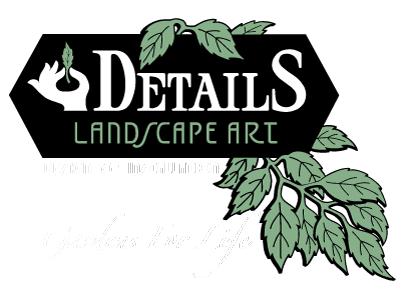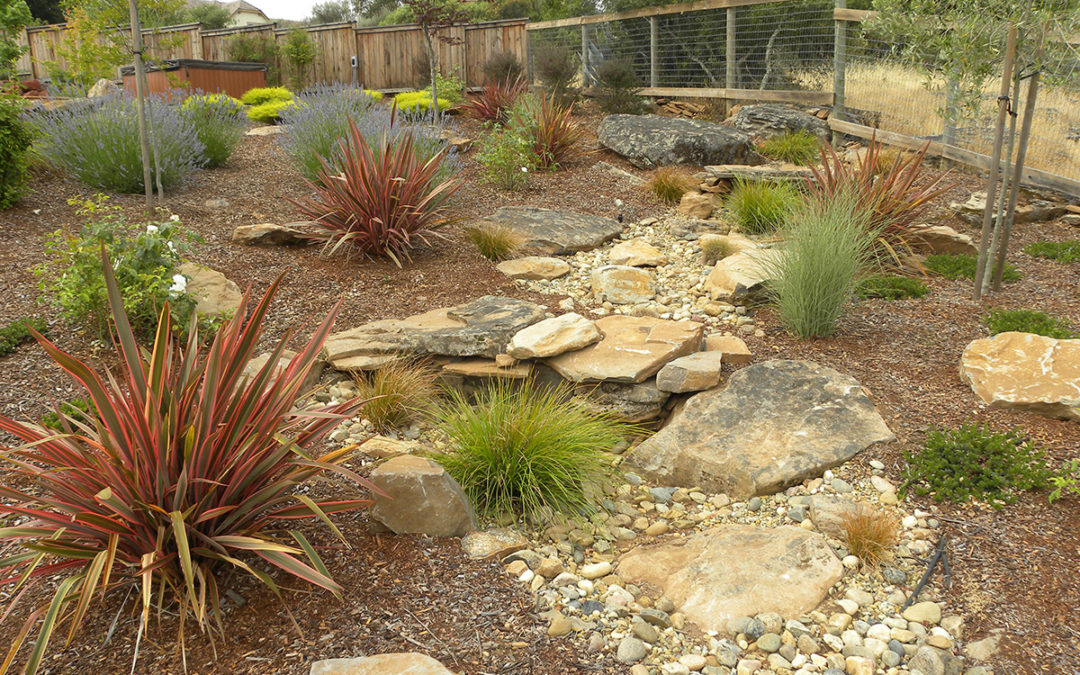One of the coolest features designed and built by Details Landscape Art, a Sonoma County landscape contractor, are dry creek beds. We install them as a means to cover and disguise otherwise unattractive French drains, and also as a way to break up a large garden area into smaller sections.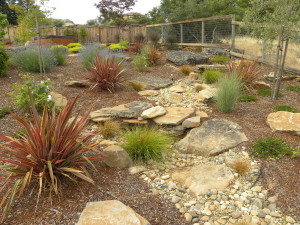
Always snaking and meandering along its length, the dry creek bed consists of rock and ornamental grasses in a natural looking formation. Once the shape of the creek bed is excavated, usually only four to six inches deep, we plant various size grasses both in the creek bed and along the banks. Then a drip irrigation line is dropped into the bed, and all the grasses dripped. Larger moss-covered boulders are the next element, again – varying sizes and shapes- and installed both in and along the banks of the entire length. We tuck rocks in and around the grasses and group them in clusters.
We use a variety of grasses in dry creek beds. And we mix them up – remember the whole trick to building an amazing feature is to make it look as natural as possible. We might even find an old log or two somewhere and throw it in for fun. Some of our favorite grasses are:
- Tulbaghia violacaea ‘Silver Lace’ – twelve inches tall and wide, pale green leaves tinged with white, with light purple flowers on eighteen inch spikes all summer
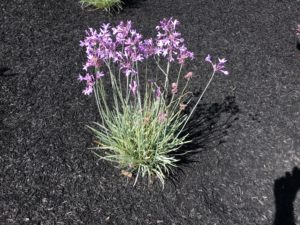
- Pennisetum orientalis – fountain grass grows two feet tall and two feet wide, with pink or tan plumes above pale straw colored clump of foliage
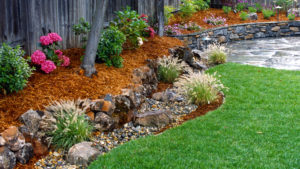
- Carex testacea – sedge – two feet tall and spreading with reddish brown (almost rust colored) foliage.
- Carex buchananii – leather leaf sedge – to three feet tall and two to two and one half feet wide, with bronze blades
- Lomandra ‘Breeze’ – bright green evergreen grass, two feet tall to four feet wide, tolerates sun or shade and moist conditions
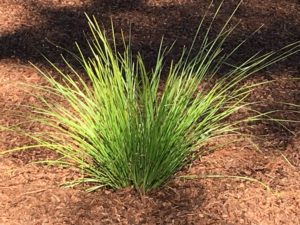
- Miscanthus sinensis ‘Morning Light’ – large grass to 5 feet tall with silver green blades. Clumps tends to keep growing wider, so we recommend dividing every two or three years
- Imperata cylindrical ‘Rubra’ – Japanese Blood Grass’ – one to two feet tall, and spreads by underground runners. This perennial grass has striking red leaves, should be cut to the ground in winter.
- Juncus – rush – similar to ornamental grasses with cylindrical stems.
Once the grasses, irrigation and boulders are in, the bed is then filled with smaller rock. We use a mixture of 1 ½ inch, ¾ inch and cobbles, usually in grey and brown tones. River rock, trinity, and Sonoma Valley cobble are stone types we typically use. Then we sprinkle some head sized and double head sized fieldstone rocks, preferable with some moss on them.
All the rocks, boulders are placed randomly – as you would find a dry creek bed in nature. It’s OK if it gets dirty, and if leaves and twigs fall in – anything natural so they don’t look man made. Dry creek beds are a very interesting feature, usually with an Asian flair, that adds a nice touch to a garden.
